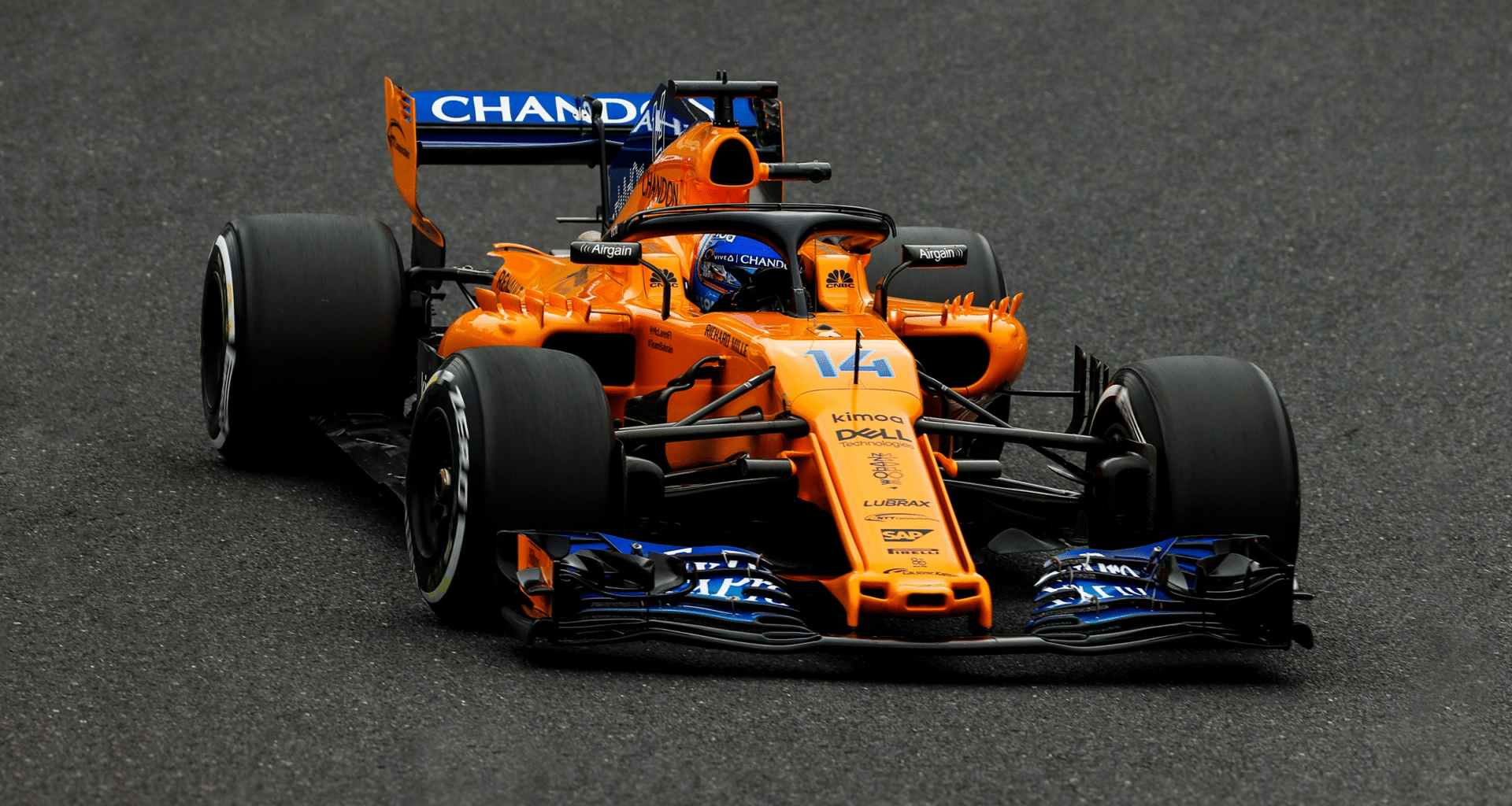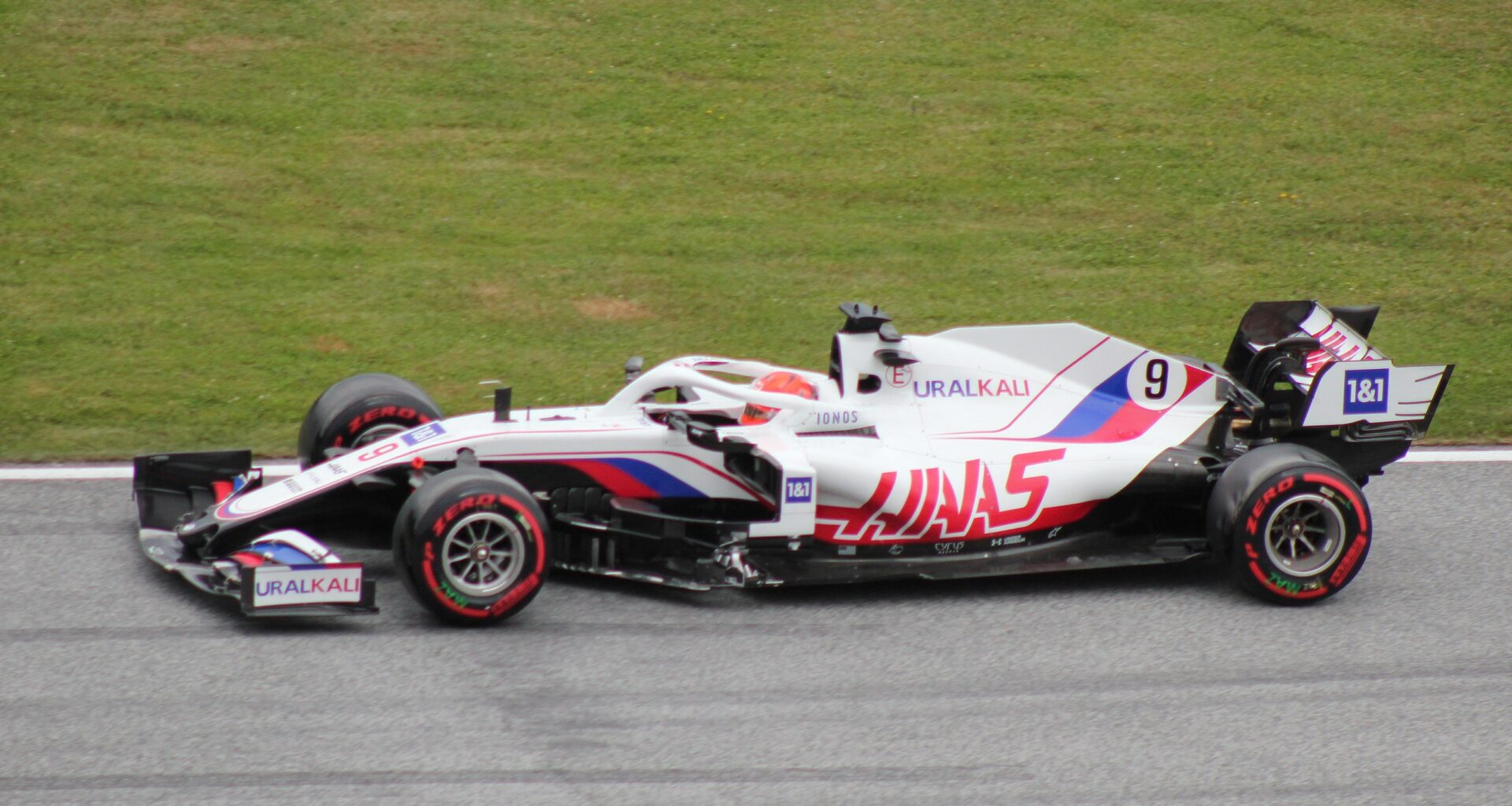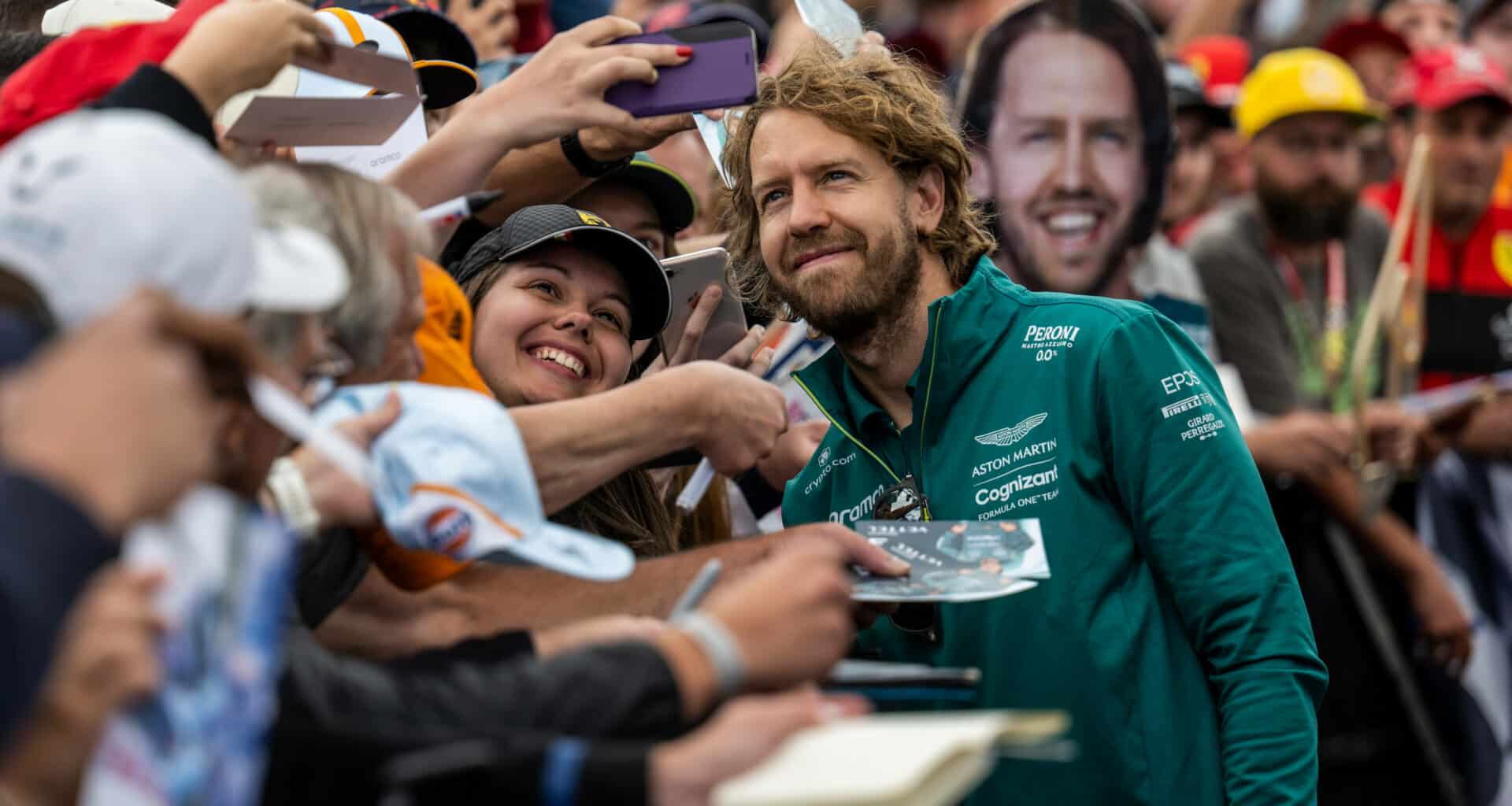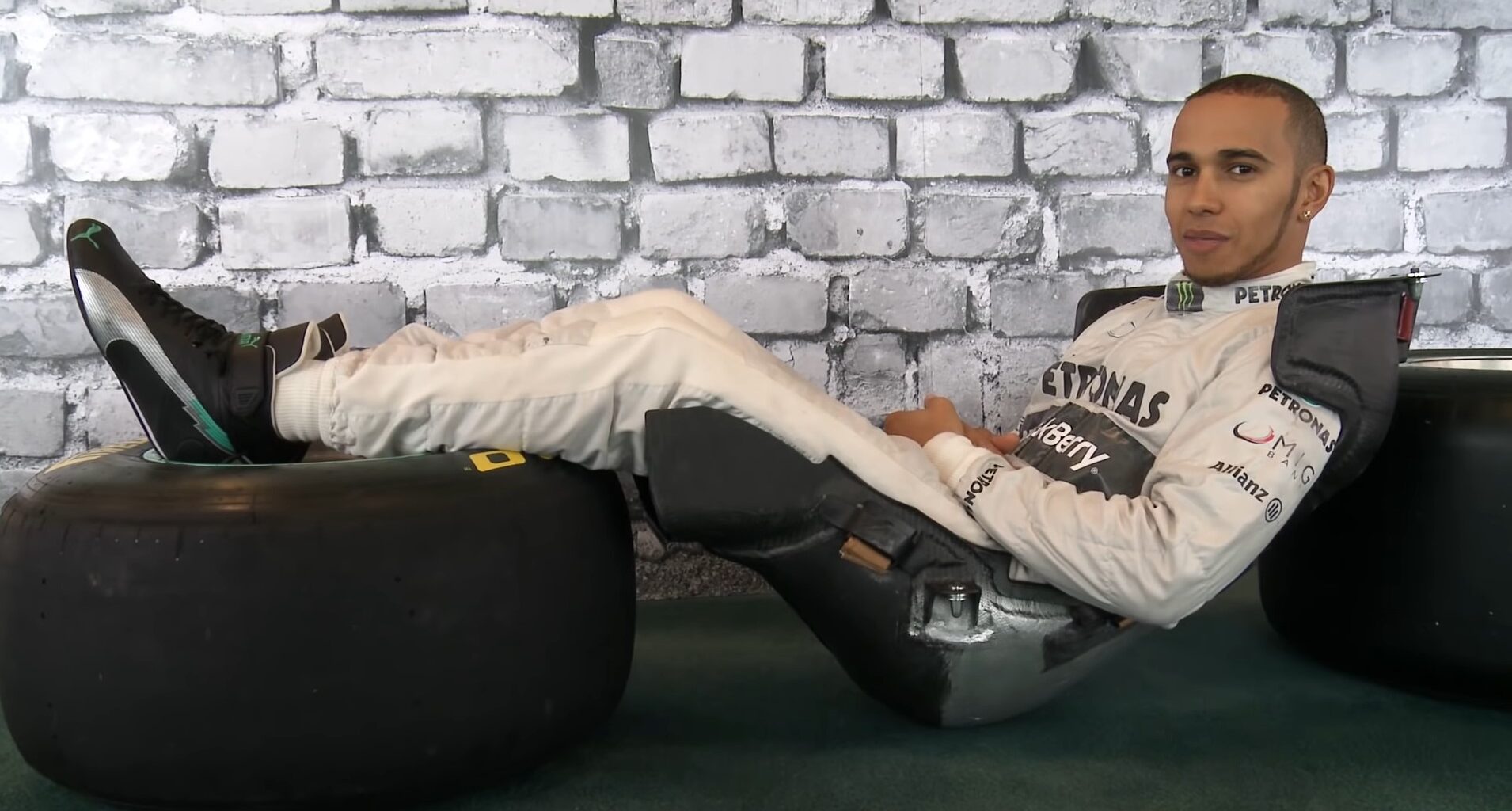Welcome to our comprehensive guide on the Nurburgring Nordschleife, the legendary motorsport complex located in the town of Nürburg, Rhineland-Palatinate, Germany.
In this guide, we’ll cover everything you need to know about the Nordschleife, from its history and evolution to its length, sections, and configurations.
Table of Contents
- 1 The History and Evolution of the Nurburgring
- 2 The Length of the Nurburgring Nordschleife: A Definitive Answer
- 3 Understanding the Nurburgring Sections and Configurations
- 4 Famous Corners and Sections of the Nurburgring Nordschleife
- 5 Driving the Nurburgring: Essential Information for Enthusiasts
- 6 Planning Your Stay: Accommodations, Dining, and Activities
The History and Evolution of the Nurburgring
The Beginning of the “Nürburg-Ring”
The idea of building a dedicated race track in the Eifel Mountains was proposed in 1925, following the examples of Italy’s Monza and Targa Florio courses and Berlin’s AVUS.
The construction of the Nürburgring began in September 1925 and was completed in spring 1927. The original Nürburgring featured four configurations: the 28.265 km (17.563 mi) Gesamtstrecke (“Whole Course”), the 22.835 km (14.189 mi) Nordschleife (“North Loop”), the 7.747 km (4.814 mi) Südschleife (“South Loop”), and the 2.281 km (1.417 mi) Zielschleife (“Finish Loop”) or Betonschleife (“Concrete Loop”) around the pit area.
The Green Hell Era
The Nürburgring quickly became a showcase for German automotive engineering and racing talent, hosting major racing events such as the ADAC Eifelrennen.
The full Nürburgring was used for the last time in major racing events in 1929, with future Grands Prix held only on the Nordschleife.
Motorcycles and minor races primarily used the shorter and safer Südschleife. Memorable pre-war races at the circuit featured the talents of early Ringmeisters such as Rudolf Caracciola, Tazio Nuvolari, and Bernd Rosemeyer.
Changes and Modernization
By the late 1960s, the Nordschleife and many other tracks were becoming increasingly dangerous for the latest generation of F1 cars. In response to safety concerns, a chicane was added before the start/finish straight in 1967, and Armco safety barriers were installed.
However, these changes were not enough to prevent Jackie Stewart from nicknaming it “The Green Hell” following his victory in the 1968 German Grand Prix.
In 1970, after the fatal crash of Piers Courage at Zandvoort, the F1 drivers decided to boycott the Nürburgring unless major changes were made.
The demands of the F1 drivers led to the reconstruction of the Nordschleife, which included taking out some bumps, smoothing out sudden jumps, and installing Armco safety barriers.
The German Grand Prix could be hosted at the Nürburgring again and was for another six years from 1971 to 1976.
The Birth of the New Grand Prix Track
In 1981, work began on a 4.556 km (2.831 mi) new circuit built on and around the old pit area. At the same time, a bypass shortened the Nordschleife to 20.832 km (12.944 mi), and with an additional small pit lane, this version was used for races in 1983 while construction work was going on nearby.
During qualifying for the 1000km Nürburgring endurance race, the late Stefan Bellof set a lap of 6:11.13 for the 20.8 km (12.9 mi) Nordschleife, which held the all-time record for 35 years until it was surpassed by Timo Bernhard in the Porsche 919 Hybrid Evo in 2018.
The Length of the Nurburgring Nordschleife: A Definitive Answer
The Nurburgring Nordschleife is a 20.832 km (12.944 mi) long racetrack, making it one of the longest permanent racetracks in the world.
The track features more than 300 meters (1,000 feet) of elevation change from its lowest to highest points, and it contains over 70 turns, ranging from slow hairpins to high-speed sweepers.
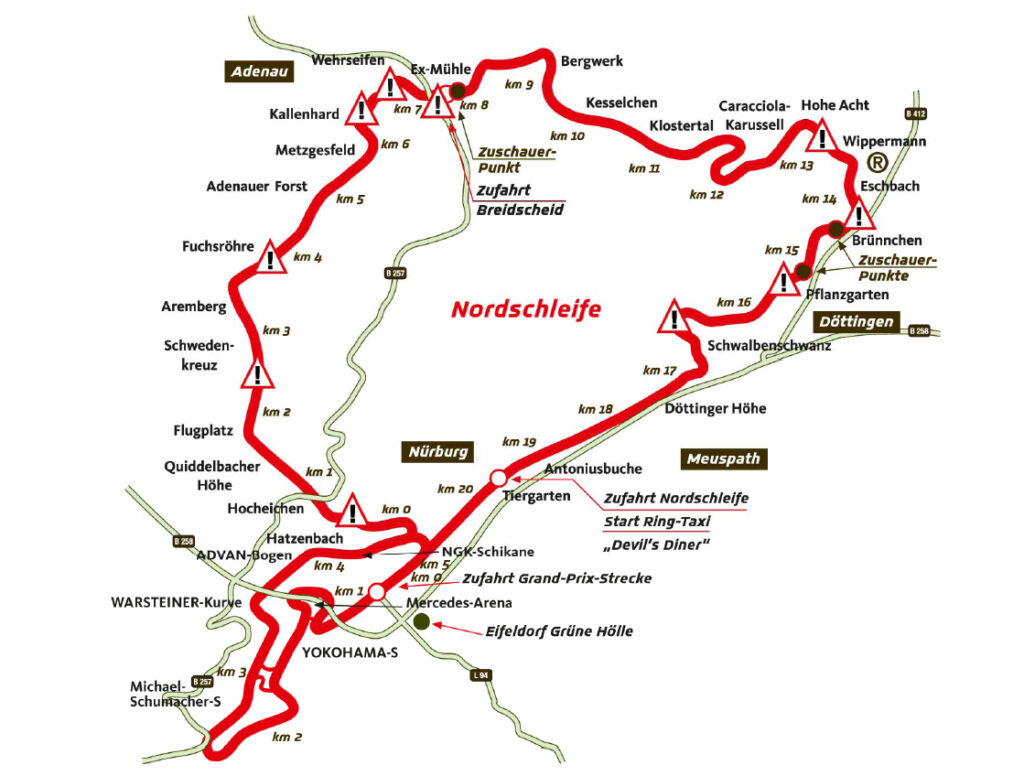
Understanding the Nurburgring Sections and Configurations
Nordschleife Layout and Description
The Nordschleife is the most famous and challenging section of the Nurburgring. It is a 20.832 km (12.944 mi) long racetrack that winds through the Eifel Mountains, featuring a mix of fast straights, tight corners, and dramatic elevation changes. The track is known for its unforgiving nature, with little room for error and limited run-off areas.
Südschleife Layout and Description
The Südschleife is a 7.747 km (4.814 mi) long racetrack that was built in 1927 along with the Nordschleife. It was used for racing until the early 1980s, but it has since been abandoned and is now mostly gone or converted to a normal public road.
The Südschleife was considered to be a safer and less challenging track than the Nordschleife, with fewer elevation changes and more run-off areas.
Modern Nürburgring Configuration
The modern Nürburgring configuration consists of the 5.148 km (3.199 mi) long Grand Prix track, which was built in 1984, and the 20.832 km (12.944 mi) long Nordschleife.
The two tracks can be combined to create a 25.378 km (15.769 mi) long combined track that is used for events such as the 24 Hours Nürburgring.
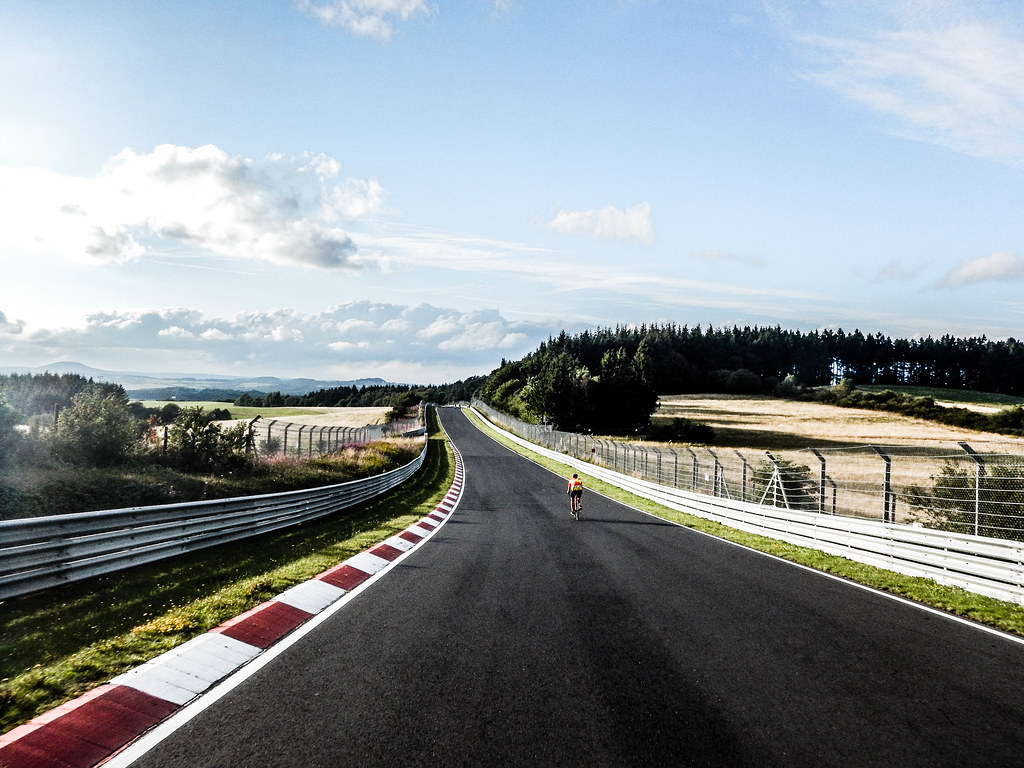
Previous Circuit Configurations
The original Nürburgring featured four configurations: the Gesamtstrecke, the Nordschleife, the Südschleife, and the Zielschleife. The Gesamtstrecke was a 28.265 km (17.563 mi) long track that combined the Nordschleife and Südschleife, while the Zielschleife was a 2.281 km (1.417 mi) long track that was used for warm-up laps and finish laps.
Famous Corners and Sections of the Nurburgring Nordschleife
The Nurburgring Nordschleife features many famous corners and sections that are known for their challenges and unique characteristics. Some of the most famous corners and sections include:
- Flugplatz (“Air Field”)
- Fuchsröhre (“Fox Hole”)
- Bergwerk (“Mine”)
- Caracciola Karussell (“Carousel”)
- Brünnchen (“Small Well”)
- Pflanzgarten (“Planting Garden”) and Stefan Bellof S (“Stefan Bellof Esses”)
- Schwalbenschwanz/Kleines Karussell (“Swallow’s Tail”/”Little Carousel”)
Driving the Nurburgring: Essential Information for Enthusiasts
Choosing the Right Track for Your Skills
Before driving on the Nurburgring, it’s essential to choose the right track for your skills and experience level. The Nordschleife is a challenging track that requires a high level of skill and experience, while the Grand Prix track is a more forgiving track that is suitable for beginners and intermediate drivers.
Hiring a Car for the Nürburgring
If you don’t have your own car, you can hire a car for the Nürburgring. There are many rental companies located near the track that offer a wide range of cars, from road-legal sports cars to purpose-built race cars. When hiring a car, it’s essential to choose a reputable company and to understand the terms and conditions of the rental agreement.
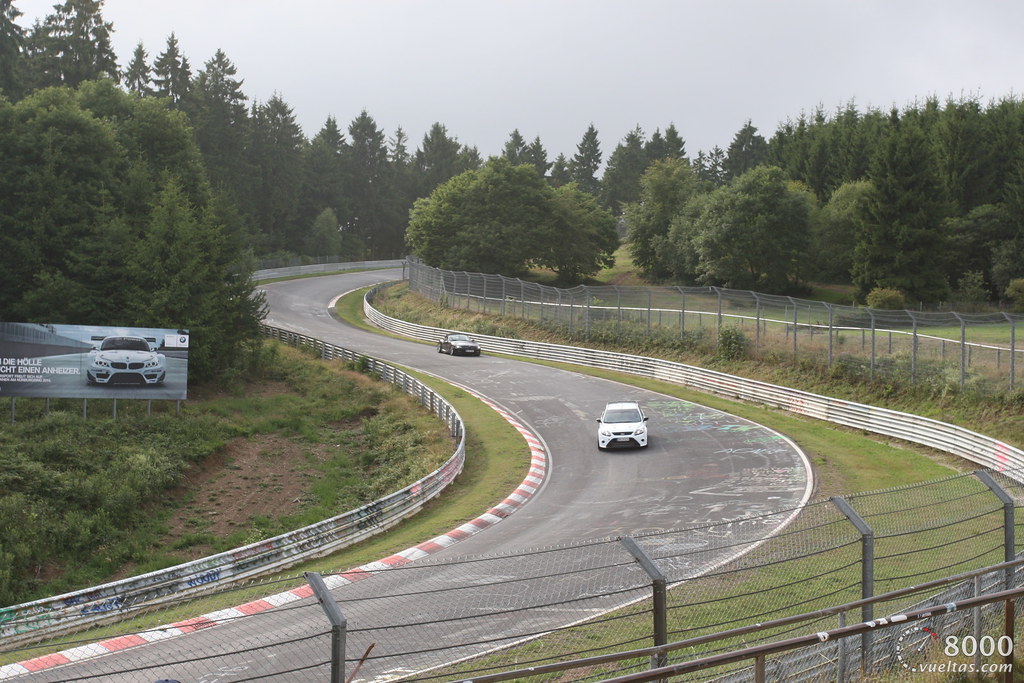
Requirements for Hiring a Car
To hire a car for the Nürburgring, you will need a valid driver’s license and a credit card for the security deposit. Some rental companies may also require you to have previous track experience or to complete a safety briefing before driving on the track.
Touristenfahrten vs. Track Days
The Nurburgring offers two types of driving events: Touristenfahrten and track days. Touristenfahrten are public driving sessions that are open to anyone with a road-legal car, while track days are private events that are organized by clubs and organizations.
Touristenfahrten are generally less expensive and less structured than track days, but they can also be more crowded and less predictable.
The Best Time of Year to Visit
The best time of year to visit the Nurburgring depends on your preferences and the type of driving you want to do.
The track is open from March to November, with the busiest months being May to September.
If you’re looking for the best weather and the most track time, it’s recommended to visit during the summer months. However, if you’re looking for a more relaxed atmosphere and fewer crowds, it’s recommended to visit during the shoulder seasons of spring and fall.
Crashes and Accidents: What to Know
Driving on the Nurburgring can be dangerous, and crashes and accidents do happen. It’s essential to understand the risks involved and to take appropriate safety precautions, such as wearing a helmet and using a roll cage if you’re driving a race car.
If you’re involved in a crash or accident, it’s important to know what to do, such as calling for medical assistance and reporting the incident to the track officials.
Driving Your Own Car: Is It Possible?
Yes, it’s possible to drive your own car on the Nurburgring, as long as it’s road-legal and meets the track’s safety requirements. However, it’s important to understand that driving on the track can put a lot of wear and tear on your car, and there is a risk of damage or accidents.
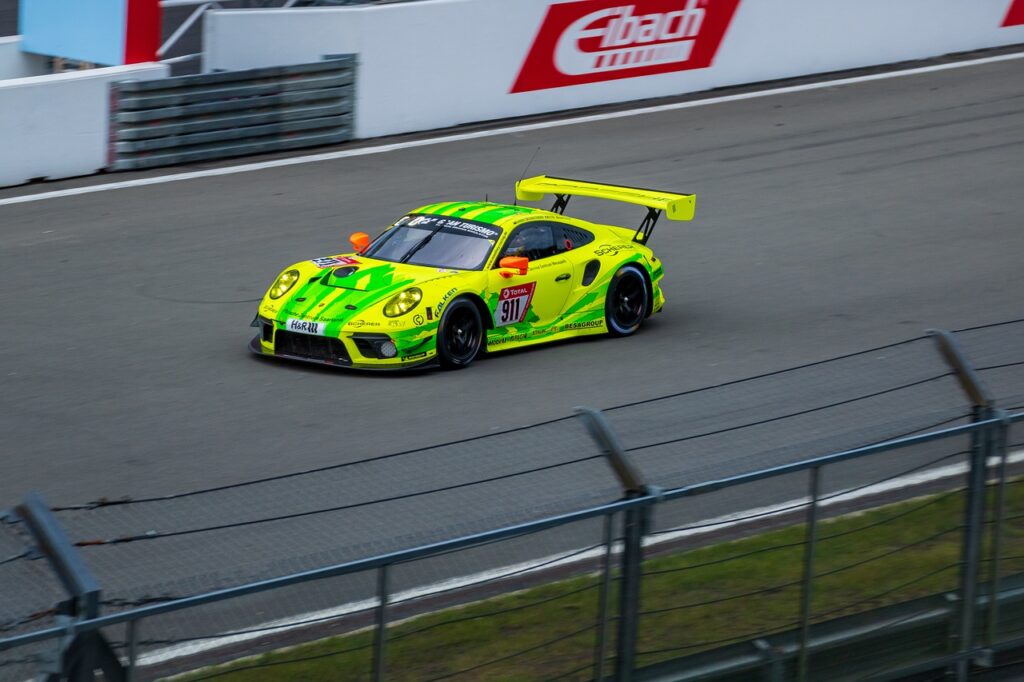
How to Get to the Nürburgring
The Nürburgring is located in the town of Nürburg, Rhineland-Palatinate, Germany. The nearest major airport is Cologne Bonn Airport, which is about 90 kilometers (56 miles) away. From there, you can rent a car or take a train or bus to the Nürburgring.
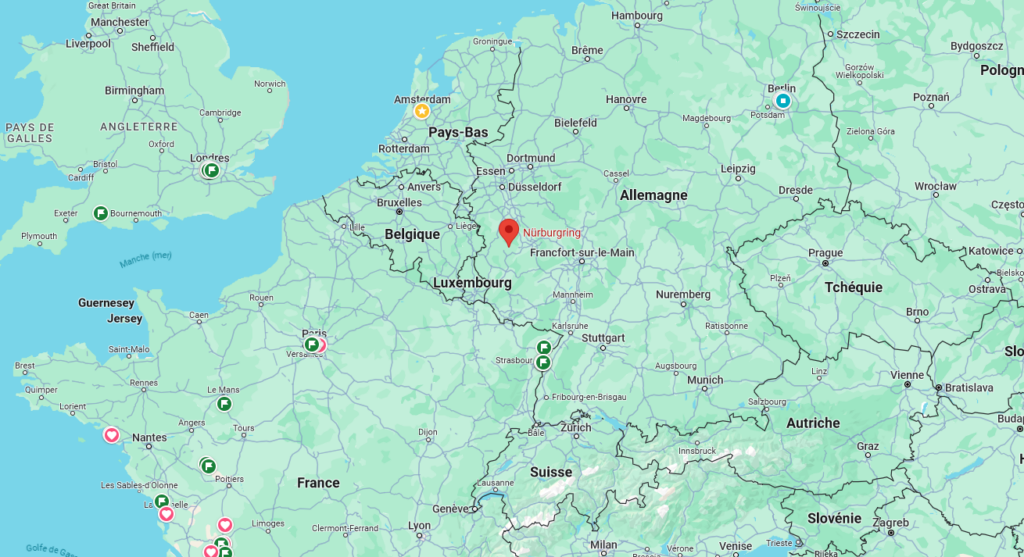
Planning Your Stay: Accommodations, Dining, and Activities
Hotel and Guest House Recommendations
There are many hotels and guest houses located near the Nurburgring, ranging from budget-friendly options to luxury resorts. Some of our top recommendations include:
- Hotel am Tiergarten: A modern hotel located near the Nurburgring, offering comfortable rooms and a restaurant serving regional cuisine.
- Lindner Congress & Motorsport Hotel: A four-star hotel located next to the Nurburgring, featuring a spa, a fitness center, and a restaurant serving international cuisine.
- Dorint Hotel am Nürburgring: A four-star hotel located on the Nurburgring, offering comfortable rooms, a spa, and a restaurant serving regional and international cuisine.
Restaurant Recommendations
There are many restaurants located near the Nurburgring, offering a wide range of cuisines and dining experiences. Some of our top recommendations include:
- Pistenklause: A popular restaurant located on the Nurburgring, serving traditional German cuisine and local beers.
- Restaurant Zum alten Forsthaus: A cozy restaurant located in the nearby town of Adenau, serving regional cuisine and game dishes.
- Ristorante Da Pino: An Italian restaurant located in Adenau, serving classic dishes such as pasta, pizza, and risotto.
Bars and Nightlife
There are several bars and nightlife options located near the Nurburgring, offering a range of drinks and entertainment. Some of our top recommendations include:
- Fuchsröhre: A popular bar located on the Nurburgring, serving a wide range of drinks and featuring live music and events.
- Paddock Bar: A sports bar located near the Nurburgring, serving beer, cocktails, and pub food.
- Ring°Werk: A nightclub located on the Nurburgring, featuring DJs, live music, and themed events.
Family-Friendly Activities Near the Nürburgring
There are many family-friendly activities located near the Nurburgring, offering a range of experiences for visitors of all ages. Some of our top recommendations include:
- Wild- und Freizeitpark Klotten: A wildlife and amusement park located near the Nurburgring, featuring animal exhibits, roller coasters, and water rides.
- Eifelpark Gondorf: An amusement park located in the nearby town of Gondorf, featuring rides, games, and a petting zoo.
- Nürburgring Erlebniswelt: An interactive museum located on the Nurburgring, featuring exhibits on the history of motorsports and the Nurburgring.
